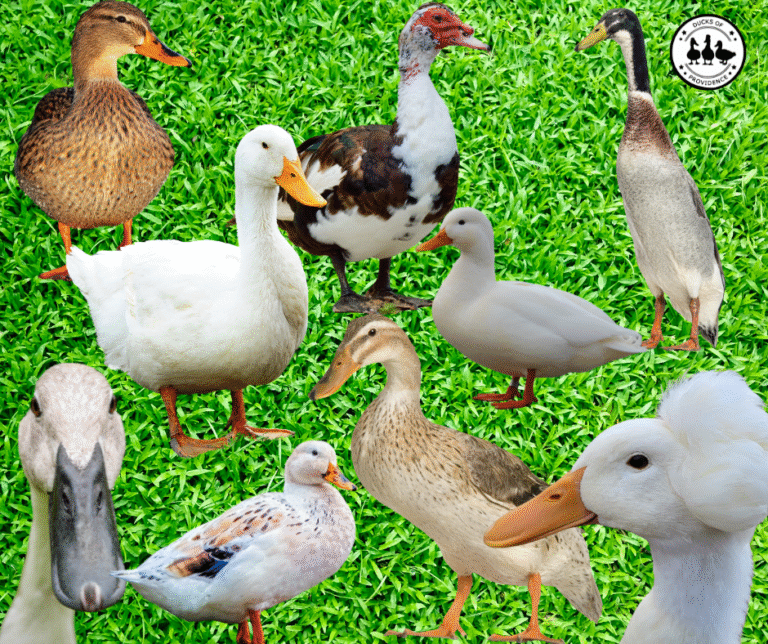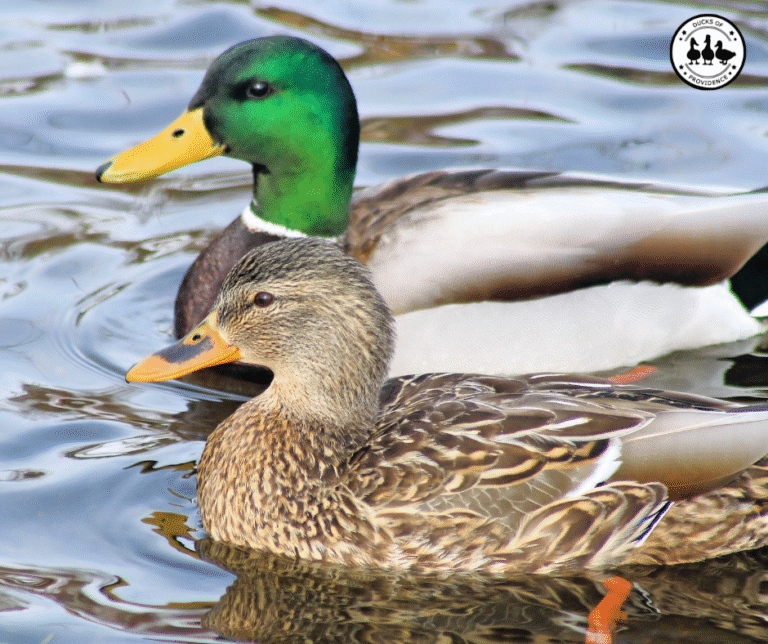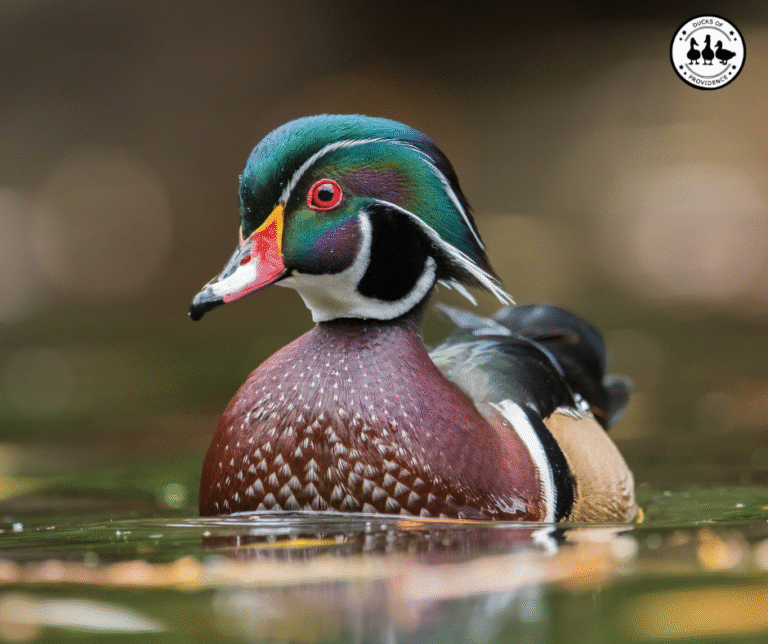
Cayuga Ducks: The Beautiful Black Duck Breed
Last updated on April 11th, 2025 at 02:08 pm
Cayuga ducks are a truly stunning addition to any flock—elegant, calm, and shimmering like polished obsidian in the sun. In this blog post, we’re diving into the fascinating world of this beautiful black duck breed, known for both their unique appearance and their gentle nature.
We’re lucky to share our lives with two Cayugas: Simon and Ronja. Simon is a true representative of the breed, proudly sporting his glossy black feathers with a deep green iridescence. Ronja, on the other hand, is a Cayuga-Mallard mix—and while she inherited many of the Cayuga’s traits, not all of the characteristics we’ll discuss apply to her. That just makes her all the more special!
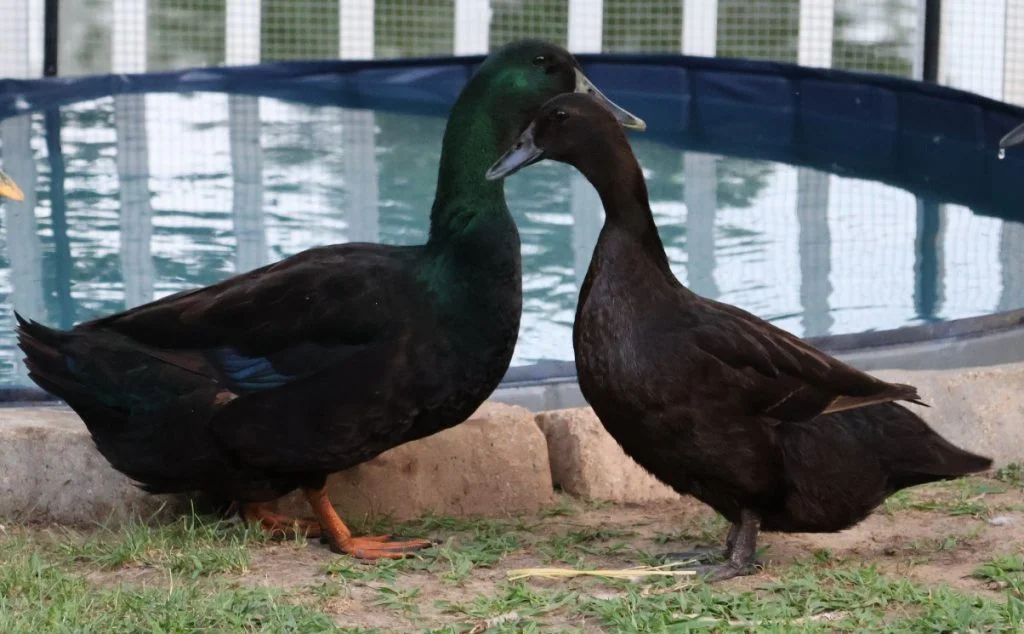
Whether you’re considering adding Cayugas to your own flock or simply curious about what makes them so captivating, we’re excited to share our knowledge and personal experiences. Let’s take a closer look at what sets Cayuga ducks apart—from their stunning plumage to their charming personalities.
Ducks of Providence is free, thanks to reader support! Ads and affiliate links help us cover costs—if you shop through our links, we may earn a small commission at no extra cost to you. Thanks for helping keep our content free and our ducks happy! 🦆 Learn more
Quick Breed Overview:
| Breed Facts | |
|---|---|
| Status | Domestic |
| Use | Eggs, Pets, Exhibition |
| Egg Color | Black fading to gray and eventually white |
| Egg Size | Large |
| Weight | Male – 7-8 lbs. Female – 6-7 lbs. |
| Temperament | Docile, Friendly, May become aggressive when broody |
| Characteristics | Seasonal mates; Broodiness; Prefers a cool climate |
History of Cayuga Ducks
The Cayuga duck is a medium-sized, black breed of domestic duck originating in the United States. It is named after the Cayuga people, a Native American tribe that lived in the Finger Lakes region of New York State.
The exact origins of the Cayuga duck are unknown, but there are two main theories. Some believe the Cayuga duck was developed from a cross between the Black East Indies and the Rouen duck. Others believe the breed originated from a wild black duck found in Cayuga County, New York.

The first recorded mention of the Cayuga duck was in 1840, when John S. Clark obtained some ducks of this type in Orange County, New York, and took them to Cayuga County. The breed quickly became popular in the area, and by the 1850s, it was being exported to other parts of the United States. The Cayuga was first exhibited at the New York State Fair in 1842 and officially recognized by the American Poultry Association in 1874.
The Cayuga duck quickly became popular in the United States, and by the 1870s, it was the most common duck breed in the country. It was prized for its dark plumage, which was resistant to fading, and its good laying ability. In the second half of the 19th century, the Cayuga duck became the principal duck breed reared for meat in the United States. However, in the late 19th century, the American Pekin duck began to displace the Cayuga duck in popularity. This was because the Pekin duck was larger and had white plumage, which made it more desirable for commercial growers.
Despite the decline in its popularity, the Cayuga duck has remained a popular breed among hobbyists and backyard poultry keepers.

Today, the American Poultry Association and the British Poultry Standards still recognize the Cayuga duck. The Livestock Conservancy lists the breed as ” Watch, ” meaning that it is a heritage breed at risk of extinction.
Characteristics of Cayuga Ducks
Cayuga ducks are medium-sized, with males typically weighing between 7 and 8 pounds and females weighing between 5 and 6 pounds. They have distinctive black plumage with a green/blue/purple sheen, most noticeable in the sunlight. Because of their distinctive color, Cayuga ducks are sometimes called “beetle-green” ducks.
Physical Traits
Cayuga Ducks are an upright breed with brown eyes, black legs, and feet that may be tinged in orange in drakes as they mature. Their bill is black but may change to olive, as our drake, Simon, beautifully demonstrated in the picture below.
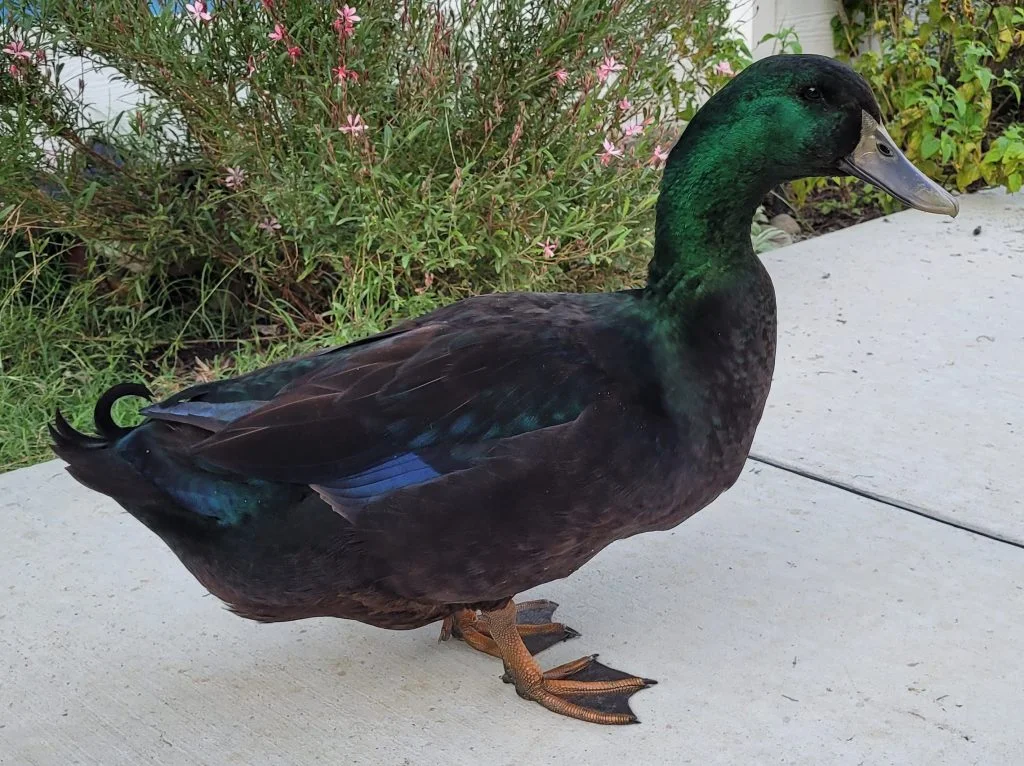
- Size and Weight: Males typically weigh between 7-8 pounds, while females are slightly lighter, around 5-6 pounds.
- Distinctive Features: They have a distinctive green sheen to their feathers, especially noticeable under sunlight.
- Color Variations: Cayuga ducks are primarily black, but their plumage can exhibit green or purple iridescence.
- Body Type: Upright breed. Long, broad, and deep. Prominent breast, keel well forward, forming a straight underline from stern to stern. The tail is carried well out and closely folded, with drakes having two or three well-curled feathers in the center.
- Head: Large
- Neck: Long, tapering, and gracefully curved
- Eye Color: Dark brown or black
- Legs and Feet: Black, may be tinged with orange in mature drakes. Straight and webbed, toes straight and connected by web
- Bill Color: Slate-black with a dense black saddle in the center, not touching the sides or coming within an inch of the end. The bean is black. The bill color may change to olive.
The Enchanting Iridescence of Cayuga Ducks
One of the most striking features of the Cayuga duck is its shimmering, almost magical plumage. In the right lighting, what first appears to be a simple black feather suddenly comes alive with glints of emerald green, sapphire blue, and even violet tones. But what causes this breathtaking effect?
The answer lies in the structure, not the pigment. Cayugas don’t have green or purple pigment in their feathers. Instead, their iridescence is caused by microscopic layers within the feather structure that reflect and scatter light—a phenomenon known as structural coloration. As light hits these microscopic layers at different angles, it’s refracted into varying colors, creating that jewel-like shimmer.

This is the same optical effect seen in peacocks, beetles, hummingbirds, and even soap bubbles! The more pristine the feather condition, the more vivid the shimmer, which is why Cayugas look their most dazzling after a good preen and a splash in clean water.
To keep your Cayuga’s plumage looking its best, offer them plenty of access to fresh water for bathing. Regular preening helps align the feather barbs, maximizing the iridescent effect. Good nutrition, especially omega-3s, also plays a role in feather health.
It’s worth noting that this iridescence can be harder to see in overcast light or when the feathers are dirty or worn—so don’t worry if they look “duller” sometimes. They haven’t lost their sparkle—it’s just hiding!
The Graceful Aging of Cayuga Hens
One of the most surprising and beautiful transformations Cayuga ducks go through is the gradual change in their feather coloration as they age—especially the hens. While they start life cloaked in a rich, inky black, many Cayugas begin developing white feathers as they grow older. This isn’t something to worry about—it’s completely natural and part of the breed’s charm!
Most Cayuga hens will start showing a few white feathers around the age of 3 or 4 (sometimes even earlier), often beginning on the chest or under the wings. As the years go by, more white feathers can appear, eventually giving some ducks a speckled or even salt-and-pepper appearance. By the time they’re senior ducks, some hens may be almost entirely white!

This change is not due to diet, illness, or feather damage—it’s simply related to pigment loss in the feather follicles over time. Similar to how people go gray with age, Cayugas lose melanin production in certain feathers as they get older. Interestingly, drakes tend to retain their dark plumage much longer than hens, although some may show minor color shifts as well.
In our flock, Simon has remained glossy and black for years, while our mixed girl Ronja—though not a full Cayuga—has started to show a few white feathers despite her younger age. It just goes to show how unique each duck can be!
Egg Production
- Laying Frequency: Cayuga ducks lay 100-150 large eggs per year, suitable for general eating and baking purposes.
- Broodiness: They become broody after laying 8-14 eggs and may exhibit aggressive behavior while sitting on their eggs.
- Mating Behavior: Cayugas tend to choose seasonal mates rather than forming lifelong bonds.
- Edibility of Eggs: Their eggs are rich and flavorful, often preferred for their high quality.
- Comparison with Other Breeds: While not as prolific as Khaki Campbells, Cayugas still provide a steady supply of eggs.
A Note on Egg Coloration
Adding to their uniqueness, Cayuga ducks lay eggs that are initially black or dark gray, gradually lightening to pale gray or even white as the laying season progresses. This change is due to the diminishing pigment applied to the eggshells over time.
Behavior and Temperament
Cayuga ducks are known for their gentle nature. They are not as active as some other duck breeds, but they are very friendly and make good pets.
Cayuga ducks are also relatively easy to care for, making them a good choice for first-time duck owners. They are also relatively quiet, making them a good choice for people who live in urban or suburban areas. Cayuga ducks are also intelligent and easy to train, and they are quite adaptable to different environments.
Cayuga ducks are a hardy breed and well-suited for cold climates.

Here are some additional facts about Cayuga ducks
- They are good swimmers and foragers.
- They are not as noisy as some other duck breeds.
- They are considered a threatened breed by the Livestock Conservancy.
- Cayuga ducks are a relatively rare breed, so you may have to do some searching to find a reputable breeder. Metzer Farms is a breeder that we love and trust, and they are also selling Cayuga Ducks.
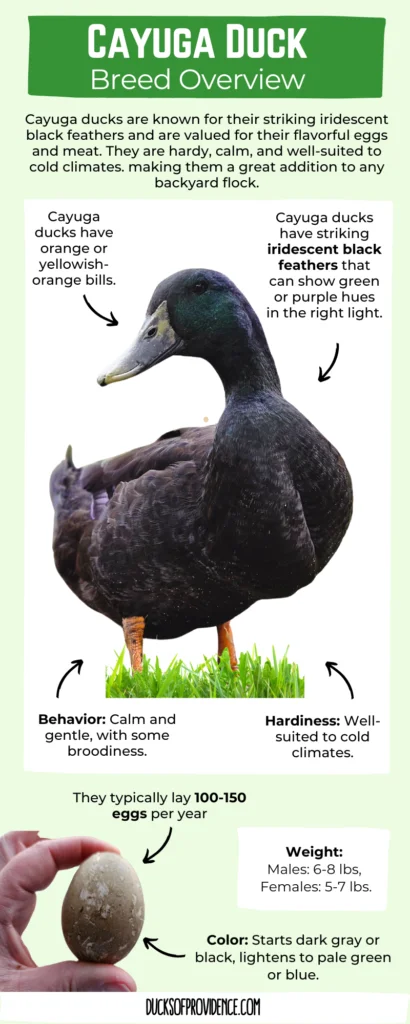
Conclusion
Overall, Cayuga ducks are a beautiful, docile, and easy-to-care-for breed of duck that is sure to add a touch of elegance to your backyard flock. If you are looking for a duck that is both beautiful and low-maintenance, then the Cayuga is an excellent option.
Learn About Other Duck Breeds:
- Muscovy Ducks: The Gentle Giants of the Duck World
- Ancona Duck – A Rare Duck Breed
- Crested Ducks: Pets with a Genetic Defect
- Khaki Campbell: The Champion Egg Layer That Can (Almost) Fly
- Welsh Harlequin Duck – Friendly, Hardy, and Stunningly Unique
- Indian Runner Ducks: The Upright, Active, and Entertaining Breed

